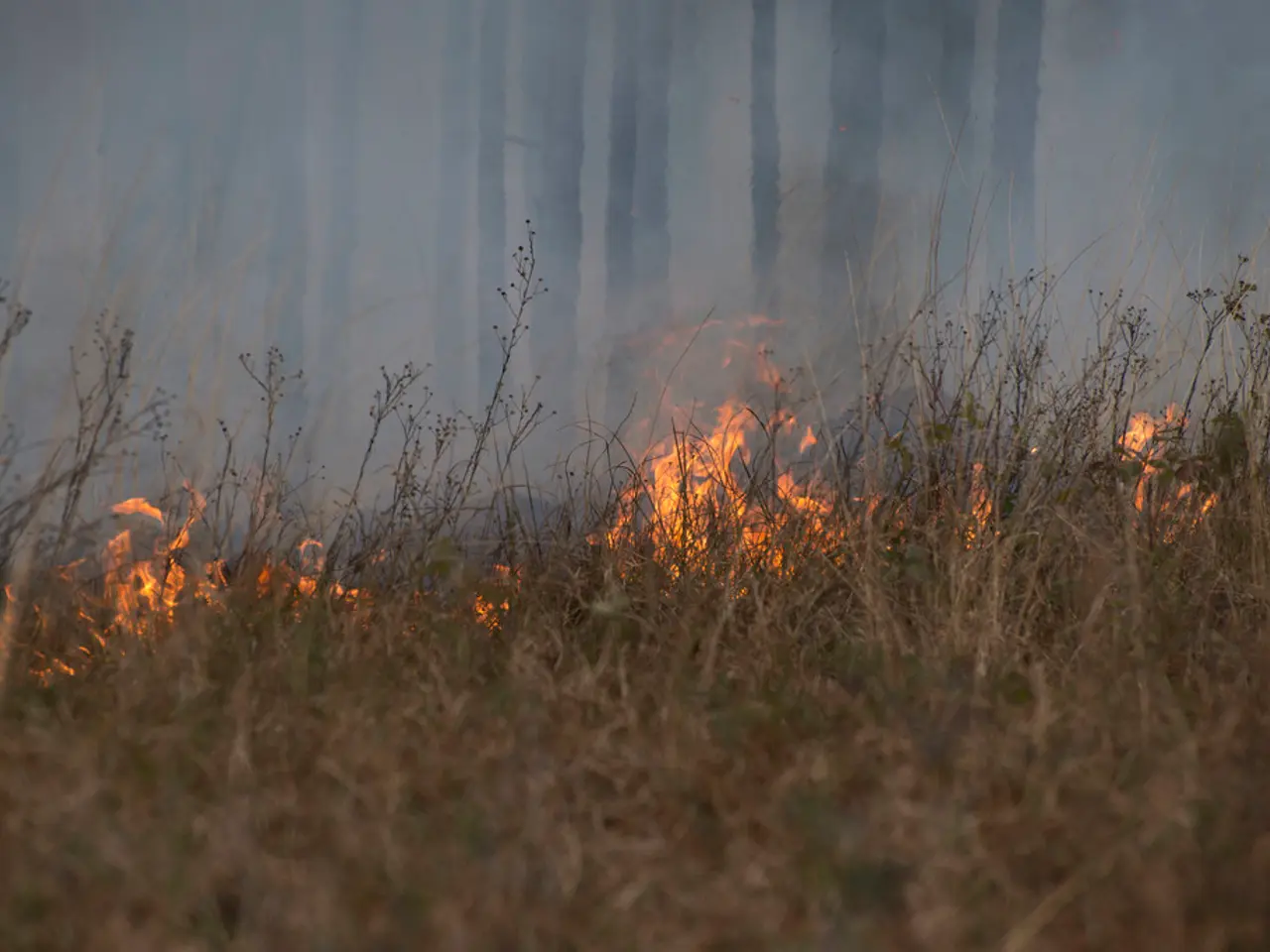Persistent flames on the B199 highway are proving difficult to extinguish for the fire department crews.
A wheat field fire on the federal road B199 caused a significant disruption and raised concerns for local residents and emergency services. The exact cause of the fire remains unknown, but it was initially reported as a moorland fire that quickly spread to the wheat field.
Upon arrival, witnesses reported meter-high flames in the burning wheat field, and roadside trees and a hedge also needed to be extinguished. The fire escalated, approaching the firefighters and their equipment, making the situation critical.
Fire departments from Spantekow, Iven, Krien, and Neuenkirchen were present on site, with André Dietmann, Einsatzleiter and Wehrführer from the Spantekower fire department, reporting on the fire. Dietmann ordered a retreat due to the approaching fire, prioritising the safety of vehicles and colleagues during the retreat.
The federal road B199 between Wegezin exit and Stern landfill was completely closed during the fire operation. A smoke cloud from the burning wheat field was visible from a distance, adding to the concern of the local community.
The fire on the wheat field was particularly intense, even for emergency services, highlighting the potential danger of such incidents. Causes of field fires in wheat fields primarily include dry and drought conditions, equipment failure, and overheated mechanical parts, especially roller bearings and drive belts in balers. Open-air burning and extreme heat combined with dry plant material also contribute to the fire risk.
Prevention methods focus on careful agricultural practices and equipment maintenance. Farmers must monitor moisture content before baling, use probe thermometers regularly on bales to detect heat buildup, avoid baling in extreme heat or wind, keep fire extinguishers accessible on field machinery, and perform timely and thorough maintenance of balers and other farm equipment. Visual inspections of equipment during operation and shutdowns can also catch hot spots early and prevent ignition.
Avoiding open-air burning of crop residue or debris near dry fields is another crucial prevention measure. Wheat field fires often spread quickly because mature, dry wheat straw is highly combustible, and the combination of friction, static electricity during baling, and dry fuels makes mechanical failure the main ignition source.
Overall, the greatest contributing factor to field fires remains extreme dry and drought conditions that desiccate crop residues and increase fire risk. Farmers must be vigilant about equipment condition and weather conditions, especially during harvesting and baling periods, to reduce the chance of fires like the federal road B199 incident.
The intense fire on the wheat field raised concerns in the local community, as it highlighted the potential dangers of environmental-science phenomena like climate-change-induced weather conditions. Climate change can lead to extended periods of heat and drought, making crops more susceptible to fires, such as the one on the B199 federal road. Weather-forecasting services play a crucial role in informing farmers about upcoming weather patterns, allowing them to take necessary preventive measures against potential field fires.








